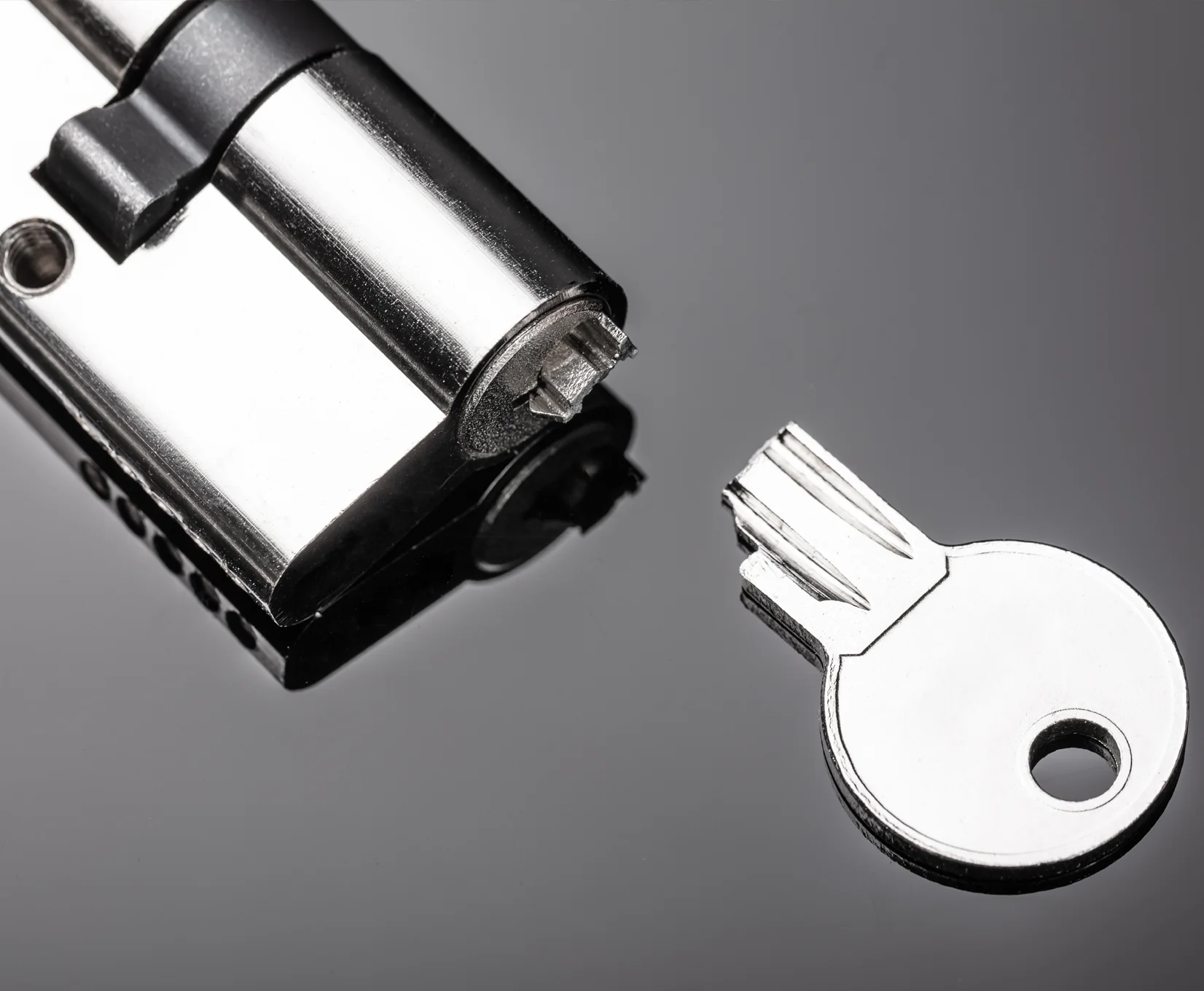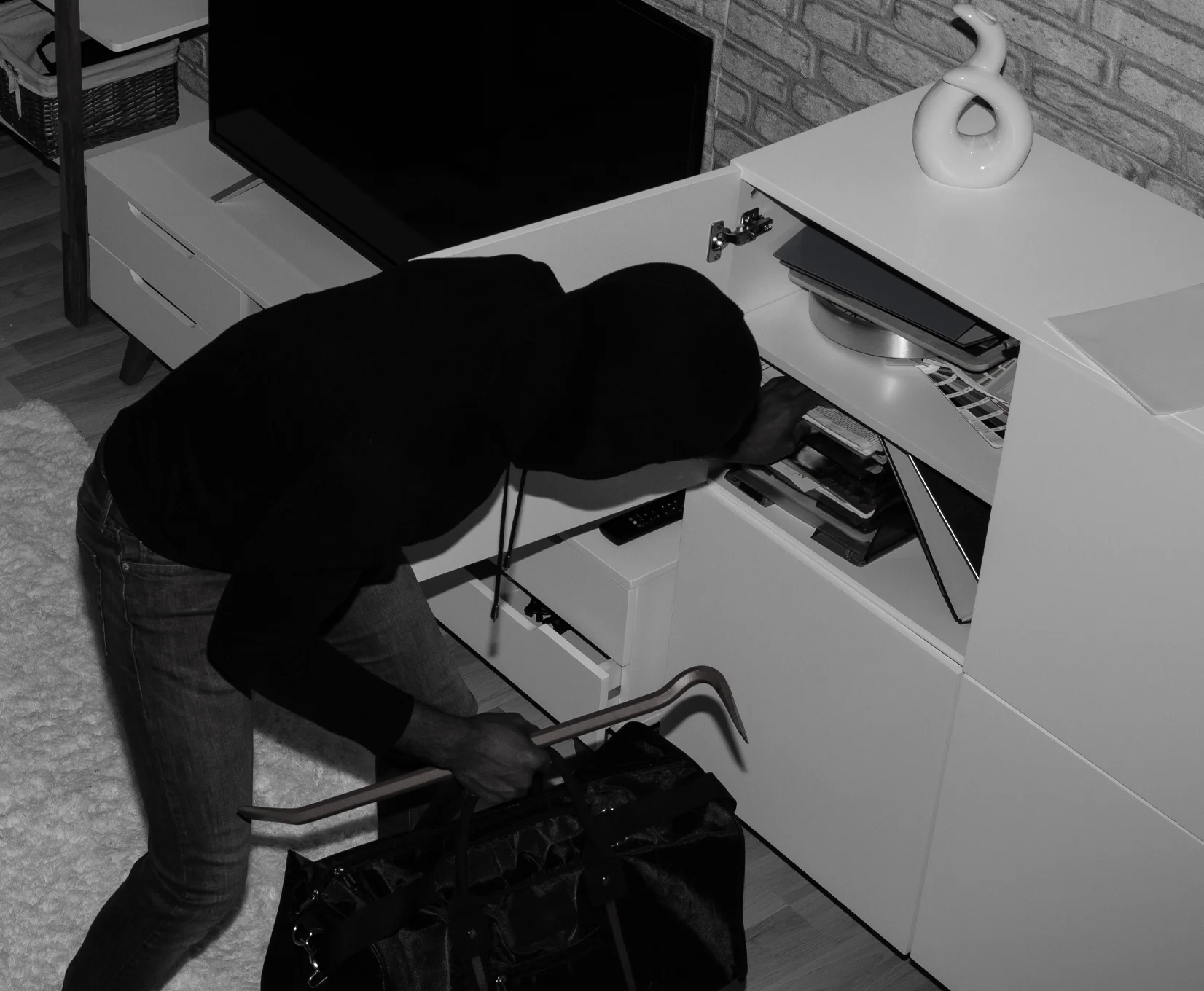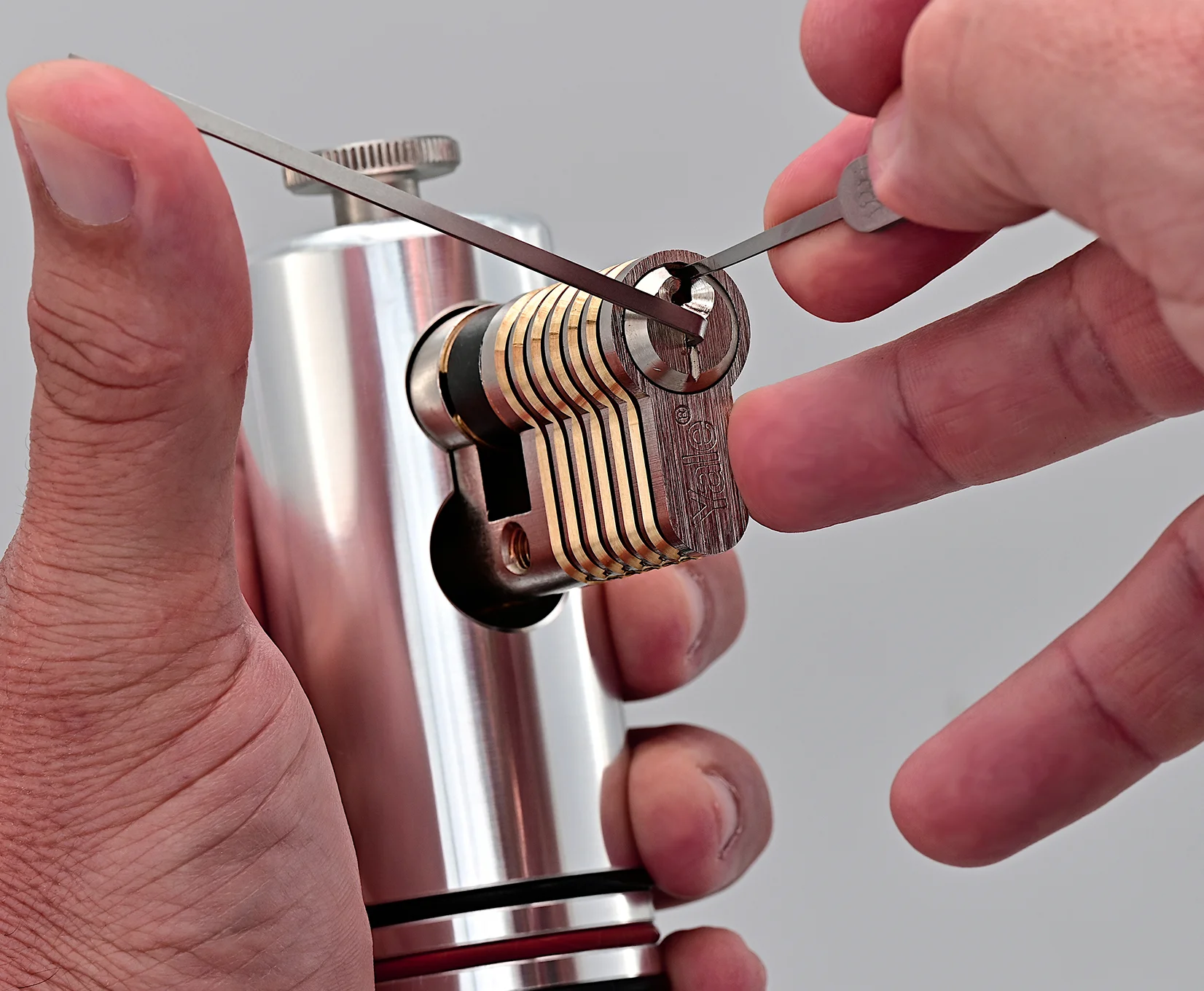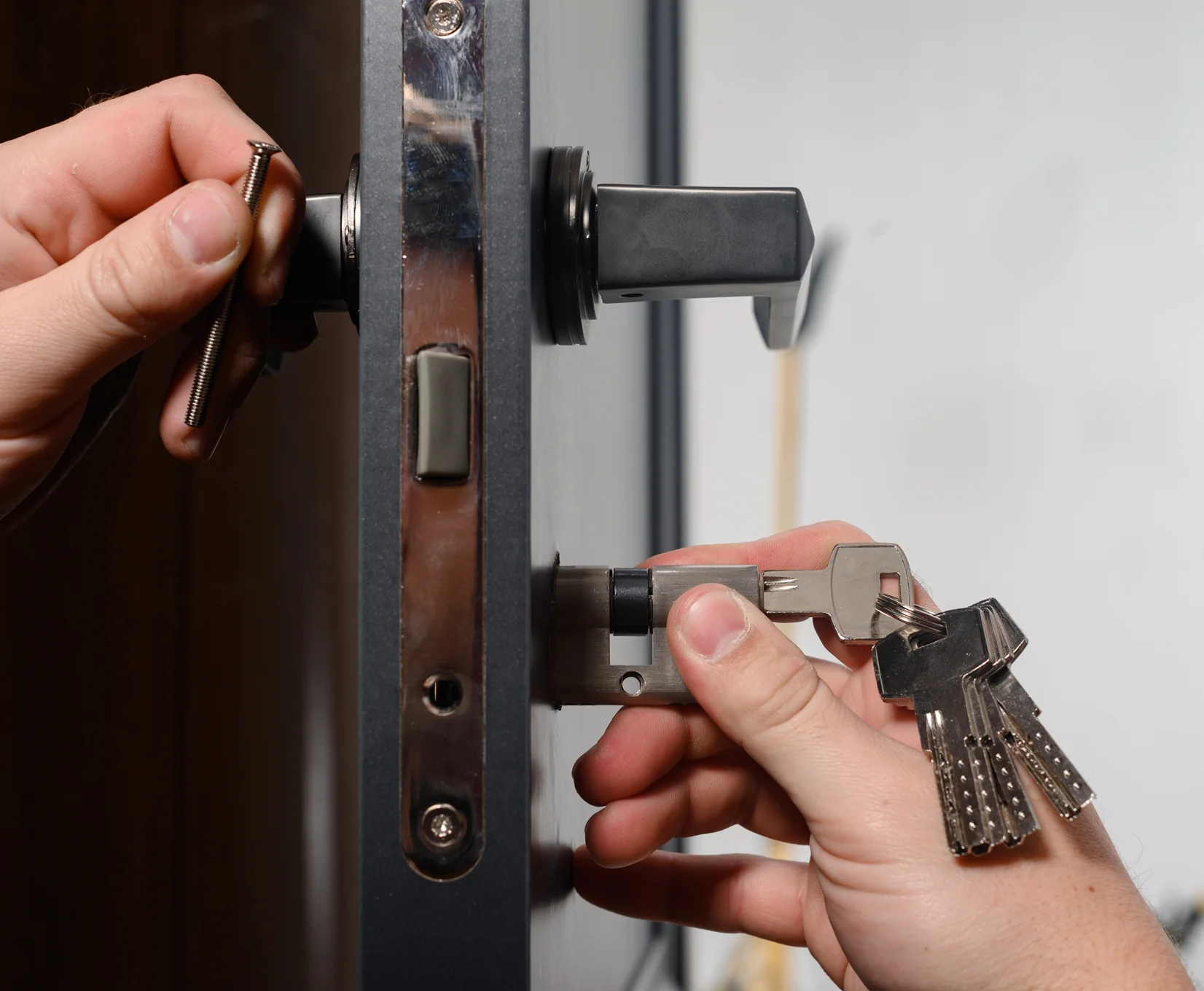
Reading time: 6 minutes / Lars Buchwald / 16 October 2025
When Things Go Wrong – and Why That’s Not Such a Bad Thing After All
Contents of This Article
→ Why mistakes are not weaknesses but teachers
→ Design & construction flaws – when perfection blocks itself
→ When technology obeys – and that’s exactly the problem
→ The hotel hack with humour – comfort beats control
→ What these cases have in common – and what they teach
→ Four principles for fewer mishaps and more security
→ Security is movement – why stagnation is the greatest risk
→ Mistakes drive progress
True security is not shown through perfection, but in how we deal with its small mishaps. One thing is certain: nothing is infallible – neither humans nor machines. And especially in the world of locking technology, things get interesting when something doesn’t work as intended. As the saying goes: we learn more from our failures and mistakes than from success. Cases in locking technology where things didn’t go according to plan aren’t embarrassments – they’re teachers. And to be honest, sometimes they’re simply too good not to share.
Technical misunderstandings you’ll never forget – and hopefully never repeat.
Let’s take a look at three particularly instructive – and admittedly humorous – real-world examples. They all have one thing in common: they show that it’s okay to laugh about security mistakes, as long as you come out wiser on the other side.
Design & Construction Flaws – When the Lock Cylinder Sabotages Itself
It was one of those moments when innovation became a little too ambitious. A well-known manufacturer – let’s call them the “designer among cylinders” – wanted to create the ultimate in precision. A high-security cylinder: sleek, elegant, and technically almost perfect. The goal? To eliminate any possibility of manipulation and control every movement down to the micrometre. After all, we know that lockpicking works by exploiting the tolerances of a lock cylinder – so, simply eliminate those tolerances. Sounds great, doesn’t it?
On paper, it was the perfect cylinder. The manufacturing looked like clockwork – every pin precisely tuned, every detail carefully considered. But in practice, perfection revealed its pitfalls, and the cylinder quickly turned into a “total failure.” When inserting the key, even the slightest pressure was enough to jam the internal mechanism. The core seized up, and nothing moved.
The cause was simple yet fatal: the tolerance range was so narrow that the system – made up of many small components – overreacted at the slightest deviation, and everything came to a halt. No external manipulation, no tool failure – the lock simply sabotaged itself.
The engineers found themselves facing a product that was theoretically unbeatable because it allowed zero tolerances, but in reality, it couldn’t even pass a basic usability test. You could say: the cylinder was too perfect to function. The lesson here is as old as craftsmanship itself: true precision and security emerge only when technology remains both robust and easy to use.



When Technology Obeys – and That’s Exactly the Problem
It was an ambitious project. A security officer wanted to prove that his company was at the cutting edge of technology. Away with keys, in with biometrics – fingerprint scanners on every door. Modern, elegant, contactless, supposedly tamper-proof. At least in theory.
The great thing about systems like this: you can feel like the ruler of all doors. Once you’re in the system, you hand out access rights like sweets – today Colleague Meier can access the archive, tomorrow perhaps not. Whoever is admin quite literally has their finger on it.
And that’s precisely where the problem began.
The security officer naturally wanted to test whether the system was as clever as the brochure suggested. So he registered his finger twice – once as an employee, once as an administrator. After all, he wanted to see whether the technology would dutifully distinguish between the powerful and the powerless. It did. Just not in the way he expected.
A fingerprint isn’t stored as an image but as a dataset of feature points – ridges, bifurcations, curvatures. On each scan the system simply checks whether a finger shares enough of those points to count as a match. When the finger was stored twice, the system ended up with two almost identical datasets and could no longer tell which one should be treated as valid.
This produced a strange but not uncommon effect: all of a sudden doors opened for fingers that were merely similar enough. The system thought it recognised its administrator again – when in reality it was just a colleague with a similarly broad thumb.
The software did exactly what it had been taught. It saw two valid fingerprints, both carrying full permissions, and drew the wrong, but logically consistent conclusion: “If it looks that similar, it must be correct.”
That wasn’t a technical fault so much as a human misunderstanding of technology. The machine doesn’t think for itself – it simply executes what it was programmed to do.
The takeaway is simple: anyone who blindly trusts technology hasn’t fully grasped the principle of security.
Hotel Hack with Humour – Two Cards, a Thousand Open Doors
What sounds like an anecdote from a hacker movie was in reality an absolute security catastrophe waiting to happen. Countless hotels worldwide used an electronic locking system that was considered particularly reliable. Contactless cards, fast access, everything managed digitally – a hotel operator’s dream.
But the system had a tiny yet crucial flaw: it failed to make a clear distinction between “guest” and “admin”.
Resourceful hackers discovered that the internal security code for each door – the so-called master key – could be derived from publicly readable data on the room card. With a bit of patience, a standard card reader and a few lines of software, one could generate a second card from a simple guest card – a kind of “master key” in the form of a credit-card-sized token.
And the best (or worst) part: you didn’t need an insider at the hotel, access to a database or specialist knowledge. Two cards, a laptop and a touch of curiosity were enough – and hotel doors around the world were open.
Suddenly the whole hotel was in uproar. Overnight the doors seemed to have minds of their own – sometimes they opened, sometimes they stubbornly refused. Guests stood bewildered in corridors while technicians with laptops and headlamps scurried between floors as if working on a secret NASA project. Entire hotel chains replaced systems at record speed, emergency training sessions were improvised, and the phrase “your key no longer works” took on a whole new meaning.
The real mistake wasn’t a technical failure but a design error: convenience had been prioritised over control. The system was practical, quick and user-friendly – but not conceived with sufficient security in mind. It relied on the assumption that no one would think to question the card logic. As it turned out, that was a fatal and ultimately very costly error.
Wired article on the Unsaflok technique that can open millions of hotel rooms with two cards.
These three cases clearly show how quickly small oversights can turn into major problems. Whether in design, technical implementation or simply in how thoroughly something has been thought through.
So what can be done to largely avoid such mistakes? Is that even possible – and if so, how? Not entirely, of course – but you can defuse them before they occur. Some approaches include thinking holistically: security is a chain. Weak points often lie where you least expect them – between hardware, software and human behaviour.
Regular checks: systems and locks are not one-off products. If you don’t test, maintain or update them, you risk being left behind technologically – or worse.
Document errors instead of hiding them: every glitch is a data point, every weakness an opportunity for improvement – that’s something worth using.
And never, truly never, trust blindly – neither an algorithm nor a piece of metal. Control is not a declaration of mistrust; it’s a sign of responsibility.
Security Is Always in Motion – Stagnation Is the Real Risk
Mistakes are part of progress. Without them, there would be no innovation, no improvement – and certainly no security. What matters isn’t that something goes wrong, but that we learn from it and adapt. Especially in locking technology, perfection is an attractive idea – but not reality. What truly counts is experience, precision and the constant questioning of one’s own craftsmanship. At Multipick, we see this as a continuous process. We develop, test, dismantle and refine – always with the goal of creating tools as reliable as the people who use them. Mistakes are no disgrace – they’re part of advancement.
FAQ – Everything You Need to Know
1. Why are mistakes in security technology often more valuable than successes?
Because they reveal the real weak points. A system that never fails is never truly tested. Only when something goes wrong do the limits of materials, software or design become visible. For developers, engineers and users, such moments are priceless – they provide real knowledge instead of theoretical security.
2. How do the most common misunderstandings between humans and technology arise?
Usually where people mistake technology for being “intelligent.” A machine doesn’t think – it follows instructions, even wrong ones. Many security problems occur when users rely too heavily on automation, software or smart systems instead of understanding how the technology works. Human logic and machine logic often speak different languages.
3. Why can too much precision in locking technology be dangerous?
Because perfection has its own pitfalls. When a cylinder is so tightly toleranced that it allows no movement, even dust or temperature changes can disable it. Security thrives on balance – between accuracy and tolerance, robustness and flexibility. A lock must not only be secure but also practical in everyday use.
4. What can we learn from digital security flaws such as fingerprint systems?
That technology is never “smarter” than its user. When a biometric system is configured incorrectly, it no longer recognises the person – only similarities. The fault rarely lies with the sensor, but almost always with the misunderstanding of how data is processed. Trust doesn’t replace control – it complements it.
5. How can a simple software design compromise an entire security system?
Because convenience is often prioritised over control. A system that’s too simple can be exploited by anyone who understands its logic. In the famous hotel key-card case, the problem wasn’t in the code itself, but in the lack of awareness that even convenience must be designed securely – otherwise, it becomes an open door for attackers.
6. Why are security problems often self-inflicted?
Because they rarely come from the outside. In many cases, a system sabotages itself – through excessive complexity, lack of maintenance or poorly defined processes. Whether high-tech or traditional craftsmanship, the decisive factor remains the human being. Mistakes occur when responsibility is handed over to technology instead of actively guiding it.
7. How can security flaws be avoided in the long term?
Not completely – and that’s a good thing. But they can be detected early. Regular testing, an open error culture and critical reflection help prevent small issues from turning into major disasters. Those who document mistakes instead of hiding them automatically build better systems.
8. What does “holistic security” mean in practice?
That security doesn’t end at the door. Mechanics, electronics and humans must work together. A perfect lock is useless if the user hides the key under the doormat. The same applies if software updates are neglected or operators are poorly trained. Security is always a chain – and every link matters.
9. Why does humour belong in the security industry?
Because mistakes are easier to accept when you can laugh about them. Humour creates distance where there would otherwise be frustration – and opens the mind to solutions. In the field of locking technology, there’s hardly anything more educational than a well-documented mishap that amuses today and prevents repetition tomorrow.
10. What makes Multipick’s approach special in this context?
Multipick views security as a continuous learning process. Every tool that is tested, disassembled or improved is a step towards greater reliability. Mistakes are not weaknesses – they are part of progress. This is how products are created that not only work, but also deliver on their promise when it truly matters – even when things go wrong.
About the Author
Lars Buchwald has been an integral part of the Multipick team since 2006, where he dedicates his passion and expertise to marketing and graphics. As a trained graphic designer and copywriter, he brings a wealth of experience and creativity to his work, which enables him to convey the messages of the ingenious tools in an appealing and convincing way. With a keen sense for the needs of the target group, he steers Multipick's marketing fortunes. His commitment is characterized by a high degree of sensitivity and the right richer at the right time.
As a native of Bonn, Lars not only has close ties to the region, but has also firmly integrated his passion for marketing spear tools into his professional work. His attachment to the city is reflected in his work and gives his marketing campaigns an authentic, Bonn touch.
Related Articles
About Multipick
Multipick was established here in Bonn in 1997 and has had its headquarters and production facilities here on the Rhine ever since.
Why should we leave here? Anyone who has been here before will agree that it is a very beautiful place and that the people are ‘typically Rhineland’, open-minded and friendly. From an early stage, we began to occupy ourselves with a wide variety of entry tools. We tried out lock snappers and core extractors such as the Bell and gathered a wealth of experience with a wide variety of tools. Whether it was a lock pick set or special tools for fire brigades and locksmiths, in the end the door or window had to be opened. In line with the motto, you got the problem and we got the solution.
Many tools, irrespective of hobby or professional, are dispatched from our warehouse to destinations throughout the world.
Opening tool kits for caretakers and locksmiths, pick sets and lock picking accessories for Locksport enthusiasts and Hobbs hooks for specialists to unlock locked safes. There are thousands of different ways to deploy our specialised tools. Our TFG latch plates and key turners allow a closed door to be reopened. QA Pro 2 and our V-Pro core pulling screws can be used to open a locked door. We also offer milling burrs and drill bits for those situations where there really is no other way. Many useful aids such as MICA opening cards, wedges, door latch spatulas, door handle catches and spiral openers, which are all useful tools to help you get the job done. But even if things get a bit complicated, you are in good hands with us. Products such as the Kronos and Artemis electric picks are our top highlights. Anyone who likes to open dimple locks or disc locks will be delighted with the ARES system. For opening windows, we offer you a range of top products from Kipp-Blitz. Favoured by emergency services such as the fire brigade, THW (Federal Agency for Technical Relief) and police. Many of our tools are manufactured in-house. This gives us the liberty to manufacture quickly and in a customer-orientated manner. No lengthy supply chains and subcontractor dependencies. This has a number of advantages both for you and, of course, for our environment. One big advantage is that you get everything from a single source, enabling us to offer you consistent quality. This is also our promise to you, all from a single source, Made in Germany, Made in Bonn - promised.








































